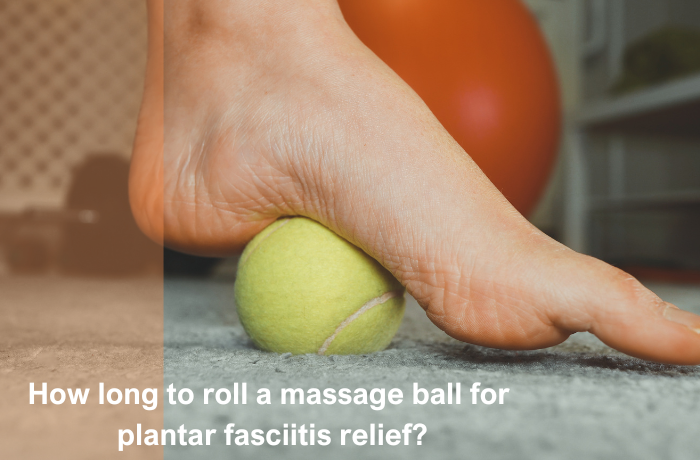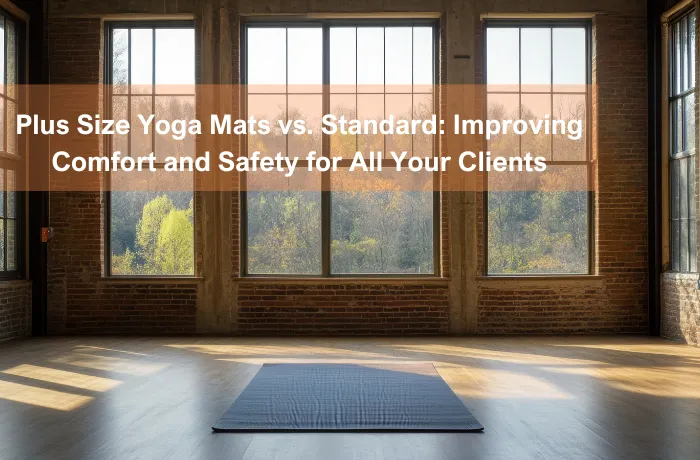You can roll a massage ball under your foot for 1-2 minutes each session, repeating this 2-3 times until you reach about 5-10 minutes per foot. Try doing this two or three times daily. Use gentle pressure on your heel, arch, and plantar fascia. Clinical studies suggest regular massage helps prevent plantar fasciitis and aids daily self-care. If you feel more pain, stop and give your foot a rest.
Key Takeaways
- Roll a massage ball under your foot for 1 to 2 minutes each time. Do this 2 or 3 times every day. This means you spend 5 to 10 minutes on each foot for the best results.
- Use gentle pressure when you roll the ball. Make sure to roll over your heel, arch, ball of the foot, and toes. Stop and pause if you find a sore spot. This can help ease pain and make your foot more flexible.
- Stop right away if you feel sharp pain and let your foot rest. Doing this often and paying attention to your body can help stop plantar fasciitis and help you get better.
Massage Ball Technique

Step-by-Step Guide
Getting started with a massage ball for plantar fasciitis relief is simple. You do not need any fancy equipment. A tennis ball, a spiky massage ball, or a golf ball all work well. Many people find the golf ball massage technique especially helpful because the size and firmness target the plantar fascia effectively.
Here’s how you can try the golf ball massage technique at home:
- Sit on a sturdy chair. Place your bare foot flat on the floor.
- Put the massage ball, such as a golf ball, under the arch of your foot.
- Start by wiggling your toes and rolling your ankle to warm up.
- Slowly roll the ball from the ball of your foot to your heel. Cover the arch and the sides as you go.
- When you find a tender spot, pause for a few seconds. Use gentle pressure and let the ball rest there.
- Keep rolling for about 1-2 minutes. Take a short break, then repeat the process two or three times.
- If you want a deeper massage, you can try the golf ball massage technique while standing. Hold onto a wall or chair for balance and control the pressure with your body weight.
Tip: Try using a frozen golf ball for your massage. The cold can help reduce inflammation and soothe sore spots.
You can use the golf ball massage technique in the morning before your first steps, after activity, or before bed. This routine helps stretch the plantar fascia and keeps your foot flexible. Many people notice less stiffness and pain after regular sessions.
Pressure and Areas
When you use a massage ball, the right amount of pressure matters. The plantar fascia is tough, but you should never force it. Start with gentle pressure, especially if you are new to self massage. As you get used to the feeling, you can increase the pressure slightly, but always stay within your comfort zone.
Focus on these key areas:
- The heel: Roll the ball under your heel and pause on any sore spots. The heel often holds the most tension in plantar fasciitis.
- The arch: Move the massage ball along the arch, both inside and outside. This area connects the heel to the ball of your foot.
- The ball of the foot: Do not forget to roll the ball under the front part of your foot. The golf ball massage technique works well here, too.
- The toes: Gently roll towards your toes. The plantar fascia extends into this area, so covering it helps with full relief.
Note: If you feel sharp pain, stop right away. The goal is to massage your entire foot, not to cause more discomfort.
Many people make the mistake of avoiding sore spots or using too little pressure. Others forget to include the heel or the toes. For the most effective golf ball massage, make sure you cover the whole bottom of the foot. Use slow, steady movements and listen to your body. Overdoing the massage can make things worse, so stick to 5-10 minutes per foot and take breaks between sessions.
The golf ball massage technique does more than just relieve pain. Studies show that rolling the plantar fascia with a massage ball improves flexibility and range of motion. It also helps reduce muscle soreness and supports recovery. The pressure from the massage ball stimulates blood flow and relaxes the tissue, making it easier to move and walk.
You can try different types of massage balls to see what feels best. Some people prefer a tennis ball for a softer touch, while others like the firmness of a golf ball. The key is to find what works for you and to use the golf ball massage technique regularly for the best results.
Frequency and Timing for Relief
How Often to Roll?
You might wonder how often you should use a massage ball for plantar fasciitis. Most experts suggest rolling your foot two or three times each day. Each session should last about one to two minutes. You can repeat this up to three times, so you spend five to ten minutes on each foot. Take short breaks between each round. This routine helps prevent plantar fasciitis from getting worse and gives your plantar fascia time to recover.
Clinical studies show that regular soft tissue treatments, like rolling a massage ball, can make a big difference. Patients who used these methods saw less pain and better movement in their feet. The key is to use the right technique and stick to a regular schedule. If you keep up with your routine, you may notice less heel pain and more comfort when you walk.
Tip: If your foot feels sore after a session, give it a rest. You do not need to push through pain to get results. Listen to your body and adjust the number of sessions if needed.
You can change how often you roll based on how your foot feels. Some people need more sessions when their plantar fascia feels tight. Others do better with fewer sessions. The most important thing is to stay consistent. Regular massage helps prevent plantar fasciitis from coming back.
Best Times for Plantar Fasciitis Relief
Choosing the right time to use your massage ball can help you get the most relief. Many people find that rolling their foot first thing in the morning works best. Your plantar fascia can feel stiff after a night’s rest. A gentle massage helps loosen the tissue and makes those first steps easier.
You can also use the massage ball after exercise or a long day on your feet. Activity can make your plantar fascia tight and sore. Rolling the foot at these times helps reduce pain and supports recovery. Some people like to do a quick session before bed. This can relax your foot and help you sleep better.
Here are some good times to try rolling for heel pain relief:
- When you wake up, before you take your first steps.
- After walking, running, or standing for a long time.
- Before you go to bed, to relax your foot.
Note: You do not have to stick to a strict schedule. Try different times and see what feels best for you. If you notice more pain, take a break or shorten your sessions.
Regular massage at the right times can help you manage fasciitis and keep your plantar fascia healthy. You will likely see the best results if you make this a daily habit. Over time, you may notice less pain and more flexibility in your foot.
Relief Tips and Safety

Enhancing Plantar Fasciitis Relief
You can make your plantar fasciitis self massage even more effective with a few simple tricks. Many people find that using a frozen massage ball or water bottle gives immediate pain relief. The cold helps reduce swelling and soothes the plantar fascia after a long day. Try rolling the frozen ball under your foot for a few minutes at home. This method is easily performed at home and offers temporary pain relief.
Focus on tender spots as you roll. Pause for a few seconds when you find a sore area. This gives targeted relief and helps to alleviate pain. You can also combine massage with plantar fascia stretching and calf stretches. Stretching keeps your foot flexible and supports long-term fasciitis treatment.
Tip: After your massage, try icing your foot or using a night splint. Supportive shoes and orthotic inserts can also help prevent strain on the plantar fascia.
A daily routine works best. Many people massage once or twice a day and stretch their foot regularly. This approach supports self-care and helps keep fasciitis from coming back.
When to Stop or Seek Help?
You should always listen to your body during self massage. If you feel sharp or increasing pain, stop right away. Some soreness is normal, but intense pain is a warning sign. Avoid pressing too hard or rolling for too long. Limit each session to 5-10 minutes.
If your symptoms do not improve or get worse, seek advice from a healthcare professional. You should also avoid using a massage ball outdoors or on slippery surfaces. Never try to walk while rolling the ball. If you have severe foot problems or other medical conditions, check with your doctor before starting any new treatment.
You can help pain at home by using a massage ball often. Experts say this easy and cheap method helps blood move better. It also helps break up scar tissue in your foot. Use gentle pressure and do it every day for the best results. If your pain does not get better, see a doctor. You will probably feel less pain slowly as time goes on.
FAQ
How long should you use a massage ball for plantar fasciitis relief?
You should roll the massage ball under your foot for 1-2 minutes per session. Repeat this two or three times for effective plantar fasciitis relief.
Can a golf ball massage technique help with heel pain relief?
Yes, the golf ball massage technique can target the plantar fascia and bottom of the foot. You may notice less heel pain and more comfort after regular use.
Is it safe to do self massage at home every day?
You can safely do self massage at home daily. Listen to your body. Stop if you feel more pain. This routine supports daily self-care and helps prevent plantar fasciitis.








